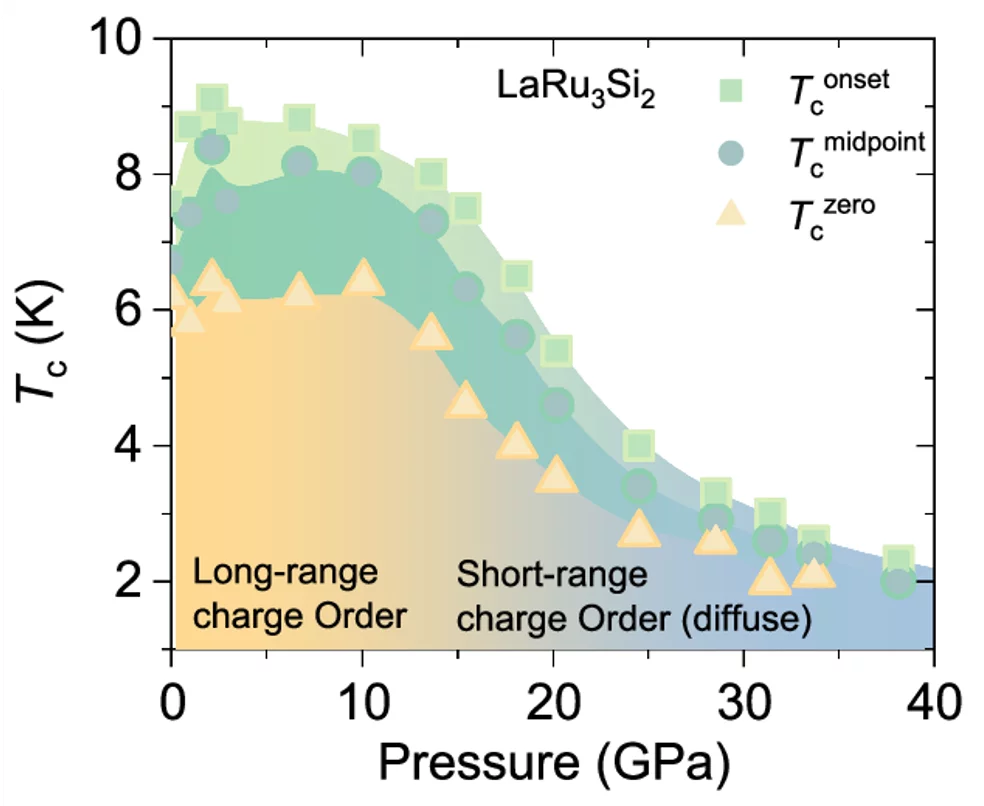Despite intense research on kagome superconductors, many fundamental questions remain—especially regarding the unconventional nature of their charge order and superconducting phases. These materials are rich in complexity, and to truly unravel their behavior, a broad and integrated approach is essential.
In this study, the authors combined a powerful suite of techniques—muon spin rotation (μSR), high-pressure magnetotransport (up to 40 GPa), high-pressure X-ray diffraction (up to 20 GPa), and DFT calculations—to probe the kagome superconductor LaRu3Si2. The results are the following:
They discovered that LaRu3Si2 hosts two distinct charge-ordered states—one that sets in above room temperature, and a second, lower-temperature charge order with a wave vector of (1/6, 0, 0) below Tco,II = 80 K. This lower-temperature order triggers enhanced magnetoresistance and a magnetic response that is driven by applied fields. Even more intriguingly, they identify a third, lower-temperature scale T* associated with time-reversal symmetry breaking and a sign reversal of the Hall effect, pointing to an unusual coupling between charge order, magnetism, and superconductivity.
The calculations reveal that electronic correlations are relevant in this material, helping to stabilize these intertwined phases. By applying high pressure, the authors were able to tune these phases and map out how they evolve. Most notably, LaRu3Si2 displays a dome-shaped superconducting phase diagram, with the superconducting transition temperature (Tc) peaking at 9 K—the highest Tc reported among kagome superconductors to date.
The authors find that superconductivity in LaRu3Si2 is closely tied to its normal-state properties. Tc scales positively with the strength of the resistivity anomaly at T*, as well as with a pressure-driven crossover from long-range to short-range charge order below Tco,II. These observations suggest that the spatial character of charge order—and its entanglement with the underlying electronic and magnetic structure—is key to understanding superconductivity in this system.
These findings position LaRu3Si2 as a model system for kagome superconductivity, where charge order, magnetism, and superconductivity do not merely coexist, but actively shape one another. While a complete microscopic theory is still needed, the results offer strong motivation for future theoretical and experimental work—such as directional uniaxial stress tuning—to further manipulate the interplay between Ru-site distortions, charge order, and superconductivity, with the potential to push Tc even higher.



